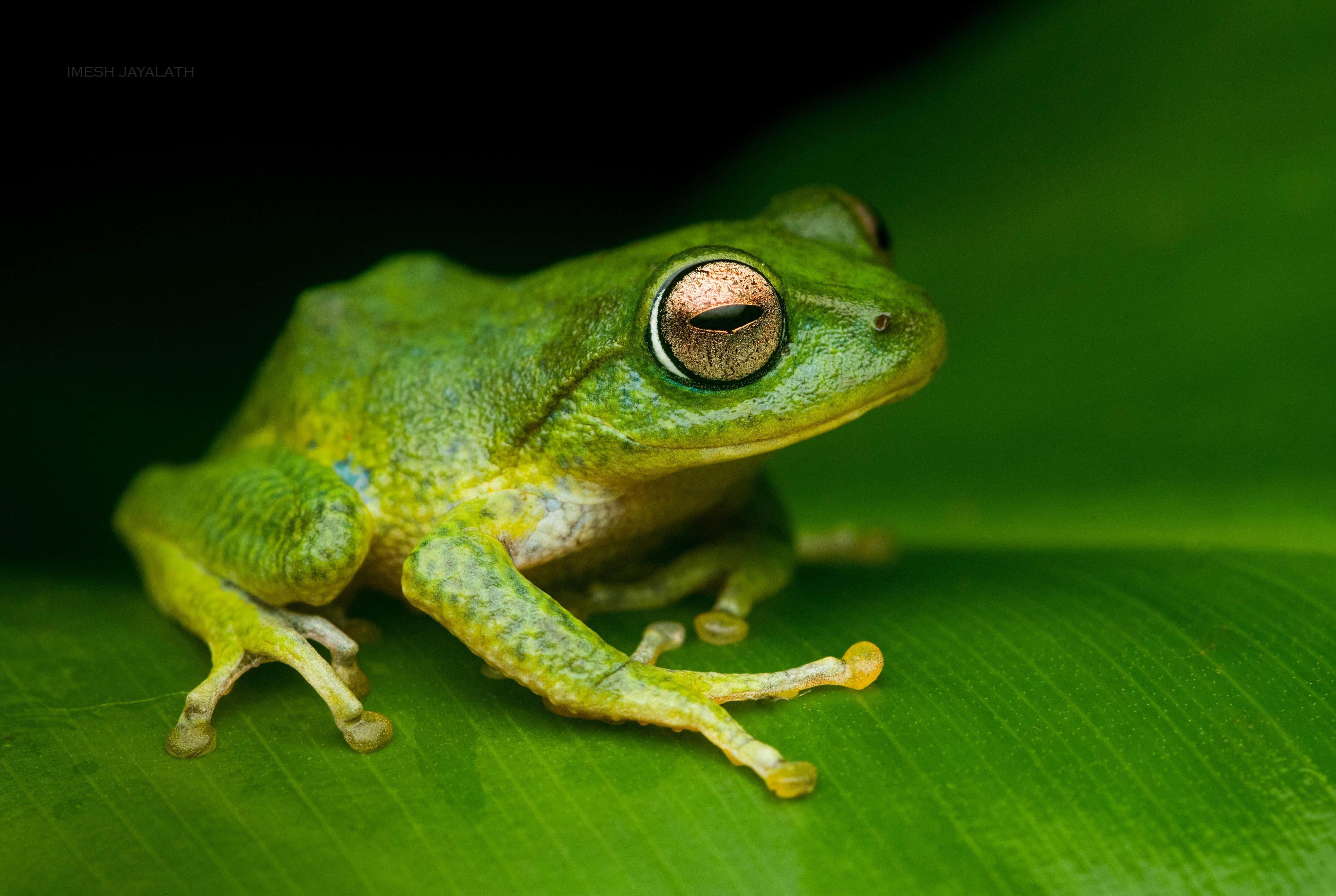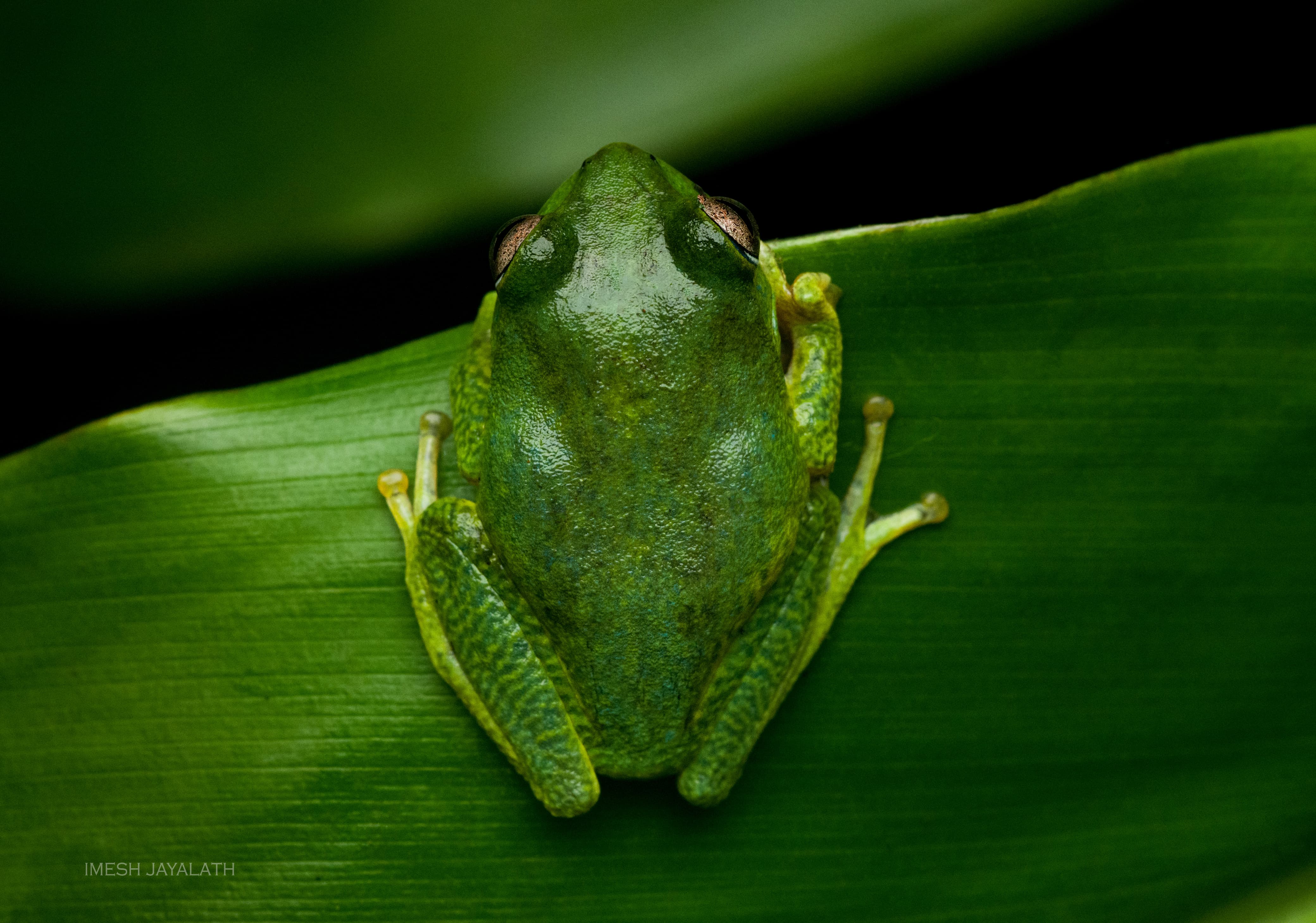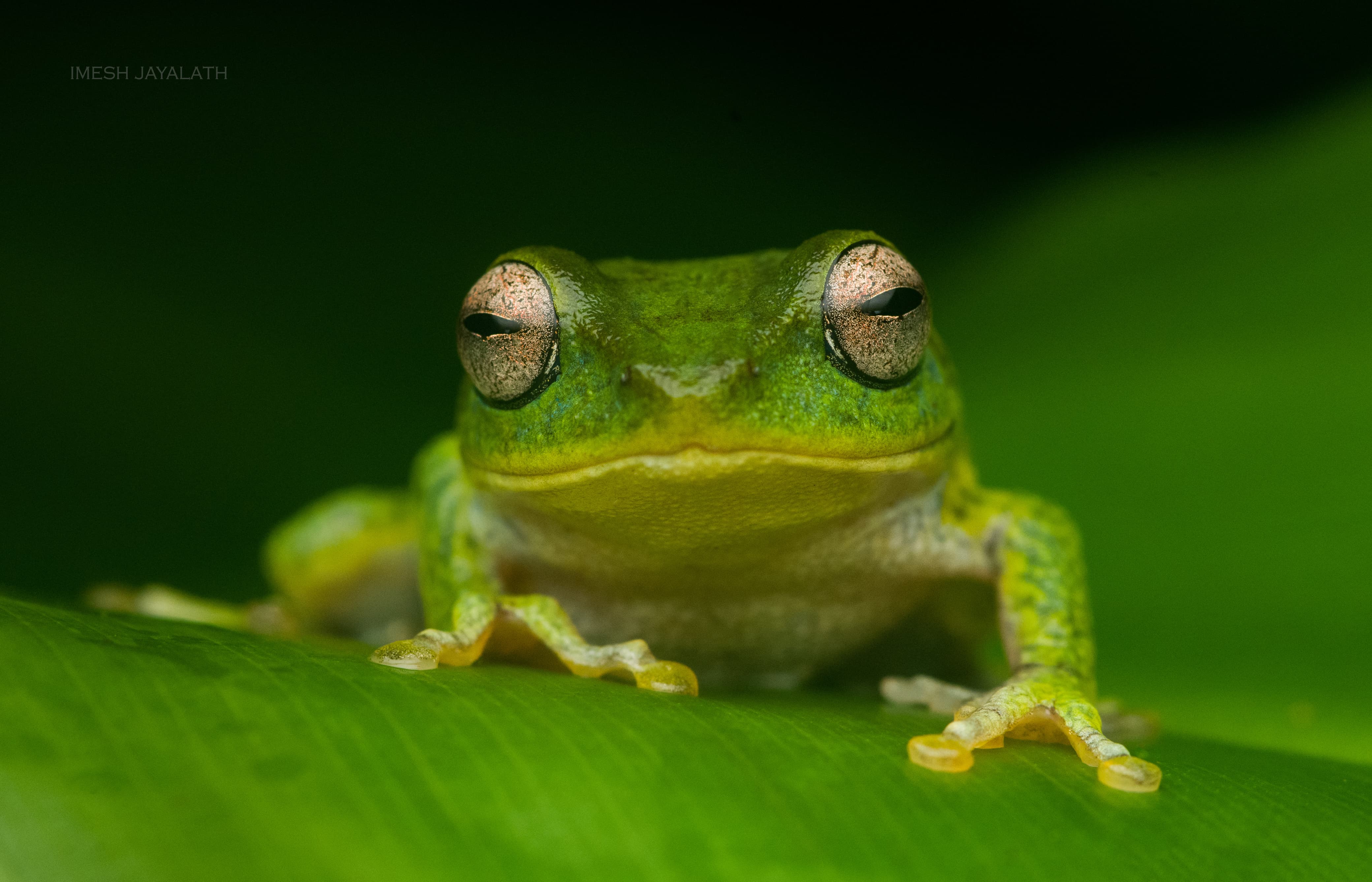
Contributor

Dull green shrub frog
The dull green shrub frog (Pseudophilautus viridis) is a small to medium-sized frog species that lives only in the central highlands of Sri Lanka. Adult males grow to about 27.6–31.5 mm, while females can reach up to 36.3 mm in body length. These frogs are usually light green or brown in color, but their appearance can vary a lot. Some have yellow or white lines on their backs or bellies, while others may have black or yellow patches on their bodies. Some even show light blue markings on their sides. The belly usually has white spots and the sides are lighter. Males often have tiny horn-like structures on their heads and backs, which are not seen in females or young frogs.

Dull green shrub frog
This species has some unique physical features. The head has no clear ridges, and the eardrum is not visible, though a fold above it is quite noticeable. Their skin is mostly smooth on the legs but granular elsewhere. Their fingers don’t have webbing, though the toes do have partial webbing. A small fringe of skin is often found along the edges of the fingers. These frogs don’t have nuptial pads, and there's no heel spur (calcar). They also have extra small bumps on their palms, which help in climbing. Their upper lips are light yellowish-green, lower lips are white, and the underside of the body is flesh-colored.

Dull green shrub frog
The dull green shrub frog is mainly arboreal, living in both natural and man-made habitats such as cloud forests and tea estates, at elevations between 1,555 and 1,830 meters. They are often seen perched on plants or tree trunks between 1 to 5 meters above the ground. Females lay eggs by digging deep holes into the forest floor. Although this species is able to survive in a variety of environments, it is considered uncommon and faces threats due to habitat destruction caused by human activities, including tea farming and expanding settlements.